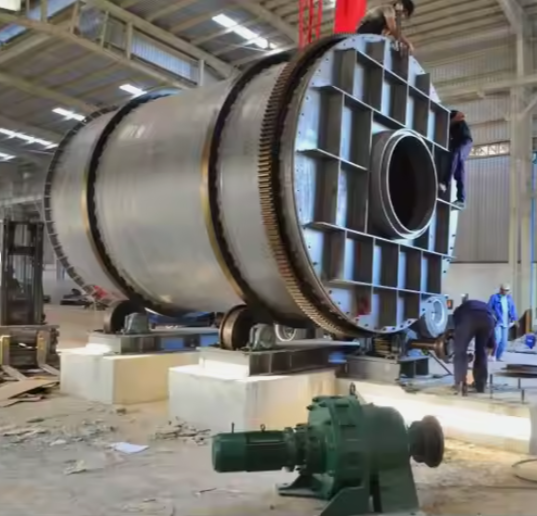NEWS&EVENTS
Home > News&Events > Company news > The history of pyrometallurgical copper smelting using PS converter
Pyrometallurgical copper smelting with PS converter is one of the main methods of copper smelting. Pyrometallurgical copper smelting includes: matte smelting of copper concentrate, copper matte blowing into blister copper, pyrometallurgical refining of blister copper, and electrolytic refining of anode copper. The final product - electrolytic copper (cathode copper) is produced after smelting.

The main smelting processes currently used are flash smelting and bath smelting. In the bath smelting process, the concentrate is thrown onto the surface of the melt or sprayed into the melt. Oxygen and nitrogen are usually sprayed into the bath to cause the bath to stir violently. The concentrate particles are surrounded by the liquid and melt rapidly, thus causing mass transfer between the bubbles containing oxygen and the solution that wraps the copper sulfide/iron. The dry concentrate in flash smelting is dispersed in the oxygen and nitrogen gas flow. The sulfur and iron contained in the concentrate burn, and smelting and blowing occur when the molten particles enter the reaction space. When these particles merge with the bath, some reactions will continue, but most of them occur during flight. The blowing process is still mainly based on the PS converter. The sulfur recovery rate of the flash copper smelting overall process (flash smelting + flash blowing) is increased from 95% to over 99.9%. The basic process is that various concentrates are smelted in a flash furnace to produce matte, which is then quenched with water, ground and dried, and then blown into blister copper with oxygen-enriched air in another smaller flash furnace. The blister copper produced is added to the anode furnace through a chute. Flash blowing has the advantages of large production capacity, advanced process technology, mature and reliable, good environmental protection, high degree of automation, low operating cost, small flue gas volume, high and stable sulfur dioxide concentration, etc., and has good promotion and application value.
The pyrometallurgical refining of crude copper is mainly based on PS-convert furnace refining. Since traditional fixed refining furnaces mainly rely on manual operation, have high labor intensity, poor environmental protection effects, are prone to copper leakage, and are difficult to control, they have gradually been replaced by rotary anode furnaces with a high degree of mechanization, a closed furnace body, and are easy to operate.